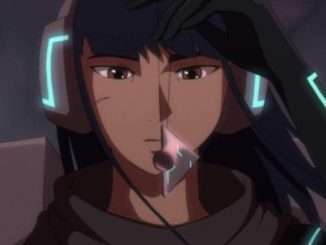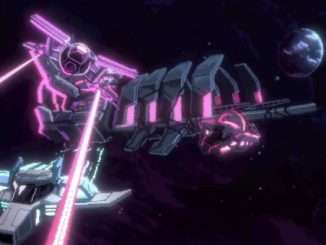
Learn about staggers, stuns, elemental effects, and how to game the system to give yourself an edge in battle.
Guide to Combat Tactics
All credit goes to Setokaiva!
Foreword
This guide aims to teach players about staggers, stuns, elemental effects, and how to use these and other elements to dominate the field of battle. I want to point out that Star Renegades has some really unique systems that can throw off even diehard RPG fans like me at first, and knowing when and how to place your attacks is absolutely Critical — pun intended.
Staggers and Breaks
In any battle, you’ll see a “time bar” at the top of the screen that shows when characters and enemies will take their actions. Pay very close attention to this bar. All combat takes place in Rounds, and each round is 60s; not literal ‘seconds’, but you can think of them more like ‘time units’ or ‘TU’s’. Any action has a time cost, and actions with lesser cost happen before higher ones in the turn order. If any attack comes before something or someone can take their turn, that attack activates a Crit, and gets bonus damage and/or additional effects on top of its regular ones.
One of the most common Crit bonuses is a Stagger, shown by a little clock icon with a number and the letter ‘s’ by it. Staggering an enemy pushes their action back by that many TU’s, which can cause them to act after your other characters, thus allowing even attacks that wouldn’t otherwise Crit them to now Crit, which can Stagger them even further down the turn. Staggering enemies completely off the round will Break them, meaning they can’t act that round at all, but — and this is important — they will have that exact same action queued in the next round! Breaking enemies does not prevent them from using that nasty AoE multi-target skill you want to avoid, it only delays it! And it may also cause them to execute that action in the next round before you have time to hit them properly again, and, their Stagger Limit (the number by each enemy’s icon on the turn bar) is probably 0 by then, so you can’t push them any further up the turn bar until they take their action!
Once an enemy does take their action, their Stagger Limit will increase again, typically by 2, allowing them to be Staggered once more. While this means you can’t completely stop enemies from taking certain actions using Staggers, it does give you more time to rack up damage, heal up, or apply buffs/debuffs to make surviving that attack easier. There are a number of important lessons and tactical maneuvers I’ve picked up from this system that I felt like sharing with everyone.
Non-Staggering Crits are Good
Staggers are nice, but they deplete an enemy’s Stagger Limit. When you want to hit a foe but don’t want to Stagger them — typically because their action is one you can easily deal with, like a single-target shot you’re going to Defend against — using Flurry attacks or others that don’t inflict Staggers lets you rack up damage without compromising your turn order. This lesson leads right into…
Knowing When to Take the Hit
It’s easy to bumrush opponents with Crits and Breaks, but it’s important to realize when your best bet is to take the hits that you can. Any time an enemy takes an action, their Stagger Limit increases for the next round, so if you didn’t stagger an enemy on Round 1 when they had 2 limit, you can stagger them *4* times on Round 2. This can make for a life-saving difference — if you know that a particular opponent has both single-target and AoE attacks, for instance, and you let him use his single-target attack while playing more defensive that round, and he then tries his AoE… well, you could very well be able to stagger him 2 or even 3 rounds off-balance before he ever gets to fire off that death-dealing ability. This will give you plenty of time to rack up damage and heal up your party.
Big staggers are not always good!
Bad Time 101: You set up your Archon to heal the party after an AoE attack that’s coming your way, then realize you’ve staggered the enemy so much that his hit is going to come after the heal, rendering the heal useless. Be mindful of things like this!
The ‘Tee-Up’
This means pushing a foe as close to the edge of the time bar as you can, then knocking them over it with an extremely staggering attack like Blitz, Sever or Shield Throw. The weight of a Stagger that Breaks an enemy determines when in the turn order their action is going to come next round, allowing you to tee-up enemies to be knocked so far over the line that you can virtually guarantee being able to continue Critting them next round.
Fury Farming
Fury is an important resource you earn during battles that lets you do special moves & combos with characters. You get 1 Fury per Crit (Stagger or no), 4 per Break, up to a max of 50. If you don’t mind prolonging fights a bit, try to milk them for as much Fury as possible, by letting an enemy get their hitsies in and continually Breaking them. Having lots of Fury lets you pull off moves that can turn fights around in a heartbeat, like a massive damage combo attack as a free action that can finish off an enemy at 0 Stagger Limit who is about to Frag or Buckets-‘o’-Pain your whole party before anyone else can kill him.
Stuns & Debuffs
Stuns are amazing. Stuns are game changers. Stuns are single-use-per-fight abilities that hate being wasted and taken for granted! Stuns do two incredible things that Staggers/Breaks do not:
- They can completely interrupt any action that explicitly cannot be delayed, like an enemy Wraith in Vengeance Mode ready to give your party a Bad Time if they attack.
- They force enemies to choose a different action! I cannot stress this enough — Breaking an enemy with staggers only delaystheir attack, it does not stop them from doing it at all! When you absolutely need to stop that sack of health called a Panzer from gutting your party, Stunning it will force it to unqueue its current action and choose something else, and that can save your characters from taking permanent damage or outright wiping.





Be the first to comment